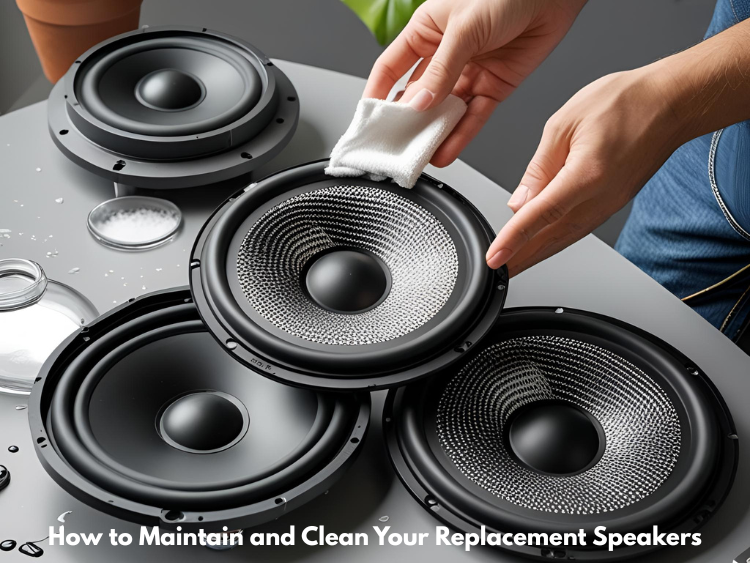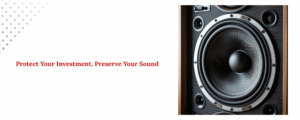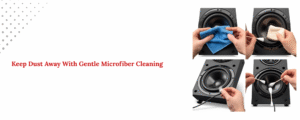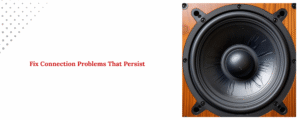It’s possible to improve the sound quality of your home theater, car, or business sound system by adding good new speakers. But if you want your speakers to sound great for a long time, you need to clean and care for them the right way. This article explains the easiest and most effective ways to keep your speakers in excellent condition.
Why It’s Important to Maintain
Speakers are precision devices. They can lose their effectiveness due to dust, dirt, water, and even normal wear and tear. Long-term, skipping normal care can cause:
- Sound that is muffled or altered
- Less time for speakers to last
- Having trouble connecting
- Damage to the look
Regular upkeep protects your investment, keeps the sound quality high, and stops damage that lasts for a long time.
Things and Tools – What You’ll Need
Get these things together before you start cleaning:
- A soft cloth made of microfiber
- Canister for compressed air
- Brush with soft bristles, like a small painting
- 70% or more isopropyl alcohol
- Swabs made of cotton
- A cleaner that comes with a brush
- Drive (if you need to take off doors or grills)
Before you begin to clean, make sure that your speakers are off and unplugged from your system.
How to Clean Step by Step
1. Dust the Outside
Clean the closet and any other surfaces that can be seen with a dry microfiber cloth. Do not use rough chemicals or products that can scratch the shine.
2. Make the Grills Clean
It’s amazing how much dust and pet hair can build up on speaker covers. If the grill can be taken off, do so and use the brush tool to carefully clean it. Additionally, a lint brush can be used for cloth grills. To get rid of dirt that won’t come off, lightly wet the cloth with water or rubbing alcohol.
You can rinse your metal or plastic grills with warm water and let them dry on their own before putting them back together.
3. Wipe Down the Speaker Cones
Be careful when you touch speaker cones because they are fragile. A soft brush or compressed air can be used to gently get rid of dust. Do not press on the cones; doing so could damage them permanently or lower the sound quality.
4. Look at the Connectors and Clean Them
Terminals and wire spots for speakers can rust or get dirty, which can make links less reliable. Oil-soaked cotton swabs can be used to clean metal connections. Let them dry completely before putting them back together.
5. Look for Signs of Wear and Tear
Look for damage like broken wires, connections that aren’t tight, or cracks in the case. A lot of problems can be avoided if these problems are dealt with early on. If a line is broken, you might want to replace it or have a professional fix it.
To choose the best fit for your car, check out this detailed guide on 6.5 inch or 6×9 car speakers — which delivers better sound.
When to Get Help from a Pro
If you hear cracking, popping, or distortion that won’t go away after checking the cables and giving the speaker a quick clean, it may need to be fixed by an expert. Some common signs that you need a technician are:
- Broken drivers
- Very badly damaged cones
- Electrical problems on the inside
- Connection issues that don’t go away
You might lose your guarantee or do more damage if you try to fix complicated problems yourself. If you want to explore the top options for replacement speakers that offer superior sound quality, here’s a helpful list of the Top 5 Car Replacement Speakers for Superior Sound Quality 2025.
Conclusion
It only takes a few minutes every couple of months to clean and check your new speakers. This will help them last longer and sound better. Just like any other fine piece of equipment, speakers work best when they are clean, properly linked, and not being stressed by things in their surroundings.
Regular care is important whether you just put in a new set of speakers or want to keep the ones you already have working like new. Following the steps above will ensure that your new speakers continue to sound great for many years to come.
To understand more about the evolution of speakers and how replacement speakers have developed over time, you might find The History of Replacement Speakers an interesting read.




